Houten vloer in appartement
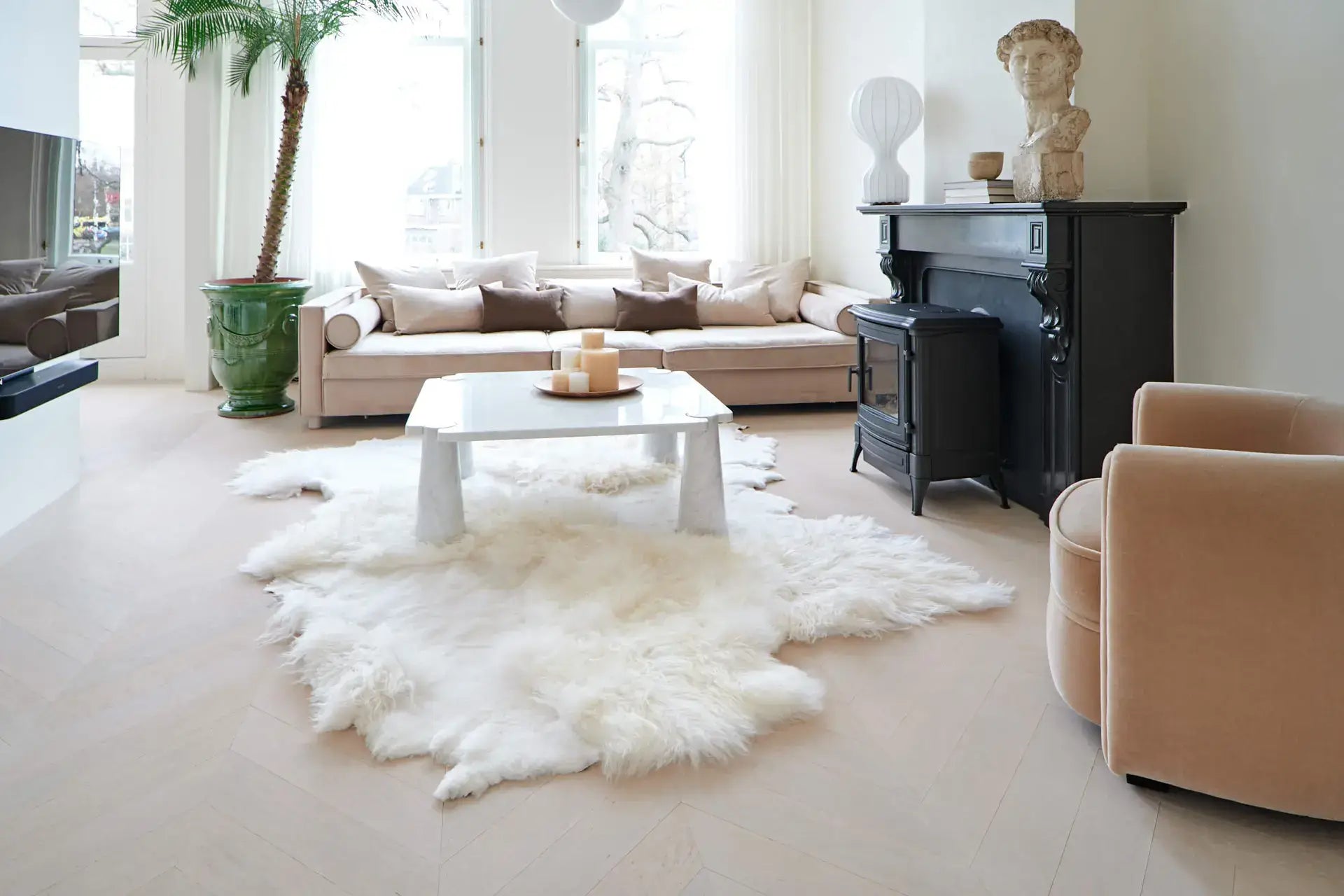
Bezoek de showroom
Can a wooden floor be installed in an apartment? Yes, that's possible. Wooden floors in any form planks, herringbone or Chevron pattern, can be installed in any apartment with a subfloor that may or may not be adapted for sound insulation.
Wooden floors have been providing atmosphere and character in homes and apartments for decades. With apartments you are dealing with houses next to each other and on top of each other. Something that often accompanies this is sound. To ensure that you and your neighbors can live comfortably, the VVE sets requirements for, for example, the use of floor coverings. But how can you enjoy a beautiful wooden floor in the apartment?
Current (floating) screed floors
A screed floor is the top layer of the floor in the apartment that has been installed by the builder. This can be a sand-cement or an anhydrite floor. In recent years, more and more apartments have been delivered with a so-called floating screed floor. This means that the screed floor is actually floating, separate from the concrete floor. The builder applies a sound-insulating material here before the screed is applied. Most apartments that are currently being built have a floating screed floor which ensures that there is little or no contact noise.
Many owners' association regulations state that a noise-reducing subfloor must be installed with hard floor coverings. This is correct in older apartments, but is not correct in newer apartments with floating screed floors.
A common mistake is the use of "old" standard regulations by the notary because this was a common wish in recent decades.
The new technique of using the floating screed floor during construction is not taken into account here.
When the requirements/regulations are drawn up, older documents are often consulted. Pieces are often used in which the structural situation is different from newly built apartments. When a floating screed floor is used, a wooden floor must always be glued. When you apply a floating floor to a floating screed floor, an annoying noise is created. See here an article from the National Noise Pollution Foundation.
Sand cement, anhydrite, wooden subfloor
In apartments with screed floors (anhydrite or sand cement) directly on the supporting floor, or only a wooden supporting floor, a sound-absorbing subfloor will always have to be used. Various subfloors are suitable for this. For example, in the case of a sand-cement or anhydrite floor, cork can be glued. In the case of a wooden structural floor, a Fermacell floor can be installed.
Wooden floors that can be installed floating, such as a plank floors , are provided with loose sound insulation (-/-10 dBa). Wooden floors that must be installed with glue, such as herringbone or chevron pattern , are provided with a glued sound-absorbing product (-/ -10dBa).
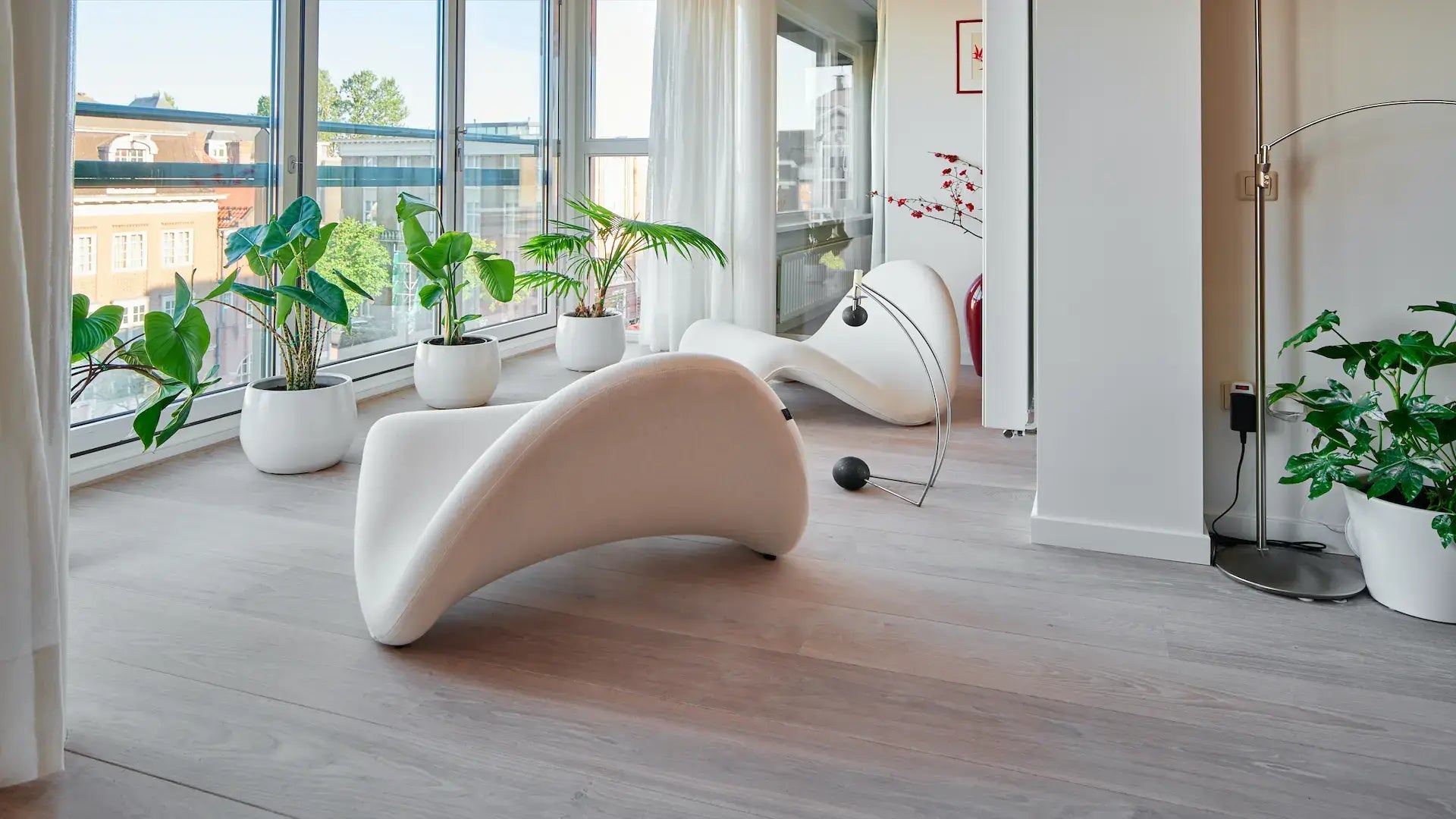
Bezoek de showroom
Underfloor heating in an apartment
Wooden floors have been compatible with underfloor heating and cooling for decades. underfloor heating is often used, especially in new construction. With a choice of 17 patterns and 90 custom colors, a wooden floor can be created to suit everyone's wishes. The wooden floor can be placed directly on the subfloor with underfloor heating . You experience the warmth of the wood and the underfloor heating .
Can underfloor heating be installed in an existing, old apartment?
What if you live in an old apartment and want to install underfloor heating ? Fortunately, there are various options to enjoy the benefits of underfloor heating in an apartment.
In some cases it is not feasible to mill the floor, due to floor height or VvE rules. In that case , electric underfloor heating can offer a solution. This type of underfloor heating uses thin heating foil, which is not only efficient but also requires no breaking or milling work and is also easy to install.
In addition, you can easily add an insulation layer, which minimizes heat loss and promotes noise reduction.
If milling is not possible, water-based low surface underfloor heating systems offer an alternative solution. These systems have a limited installation height, making them suitable for situations where milling is not practical or possible.
Ontvang maatwerk advies in:
Owner's Association rules regarding underfloor heating
When installing underfloor heating in an apartment, it is important to consult the rules of the Owners' Association. Sound insulation and heat insulation are crucial aspects to ensure that the system does not cause inconvenience to neighbors below and to minimize energy loss. So make sure you are aware of the specific rules and guidelines of the homeowners' association before installing underfloor heating .
Durable
Wooden floors are durable and value-adding floors for your apartment. Uipkes wooden floors last a lifetime, so the floor does not need to be replaced once every 10-15 years. In addition to the economic benefits, wood also offers ecological benefits.
Along with wool and cork, wood is the only recoverable floor covering. It ensures a healthy living environment and stores CO2 as long as it is not burned.
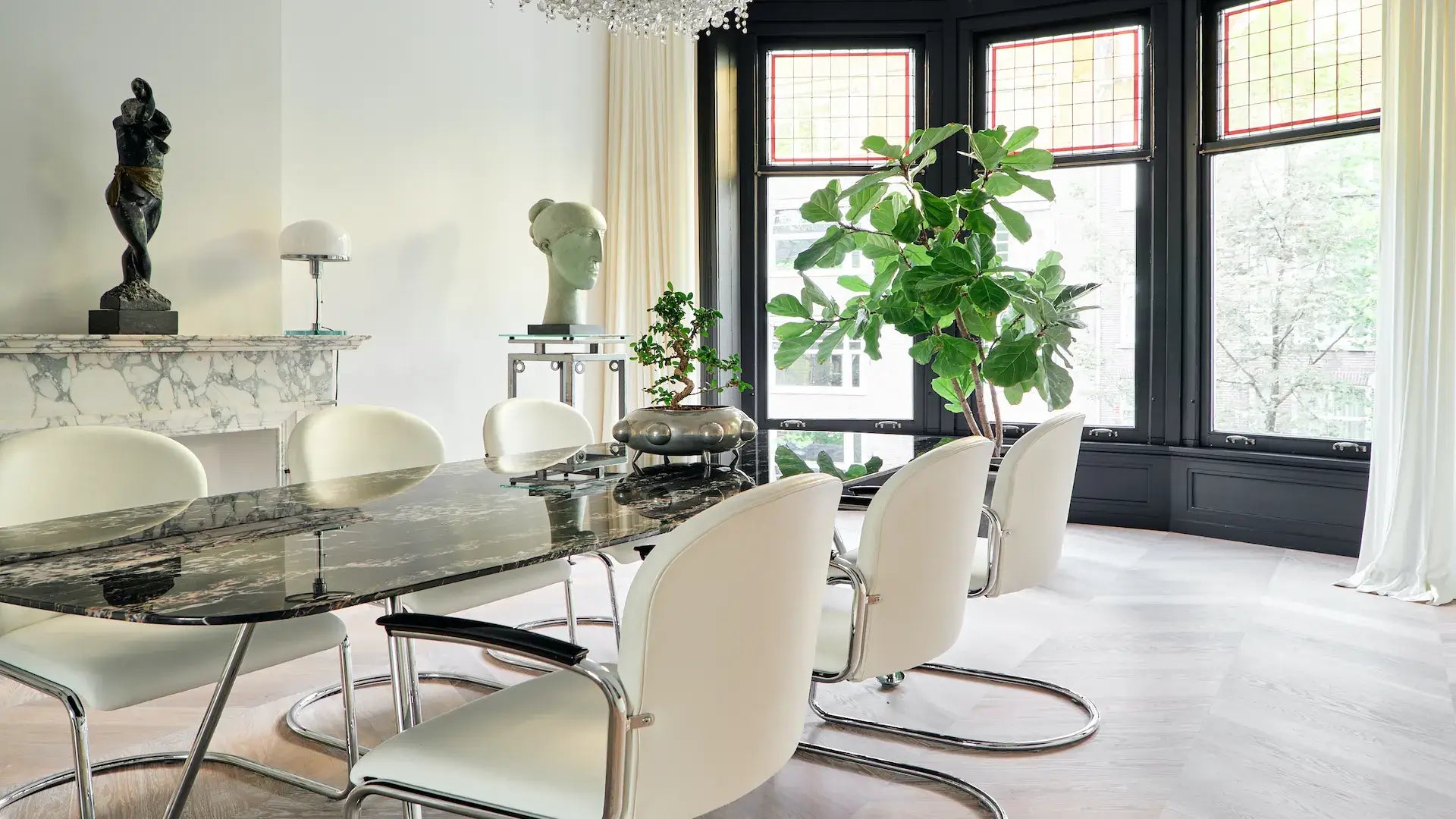
Can a wooden floor be installed without barriers?
Wooden floors are durable and value-adding floors for your apartment. Uipkes wooden floors last a lifetime, so the floor does not need to be replaced once every 10-15 years. In addition to the economic benefits, wood also offers ecological benefits.
Along with wool and cork, wood is the only recoverable floor covering. It ensures a healthy living environment and stores CO2 as long as it is not burned.
Ontdek de mogelijkheden
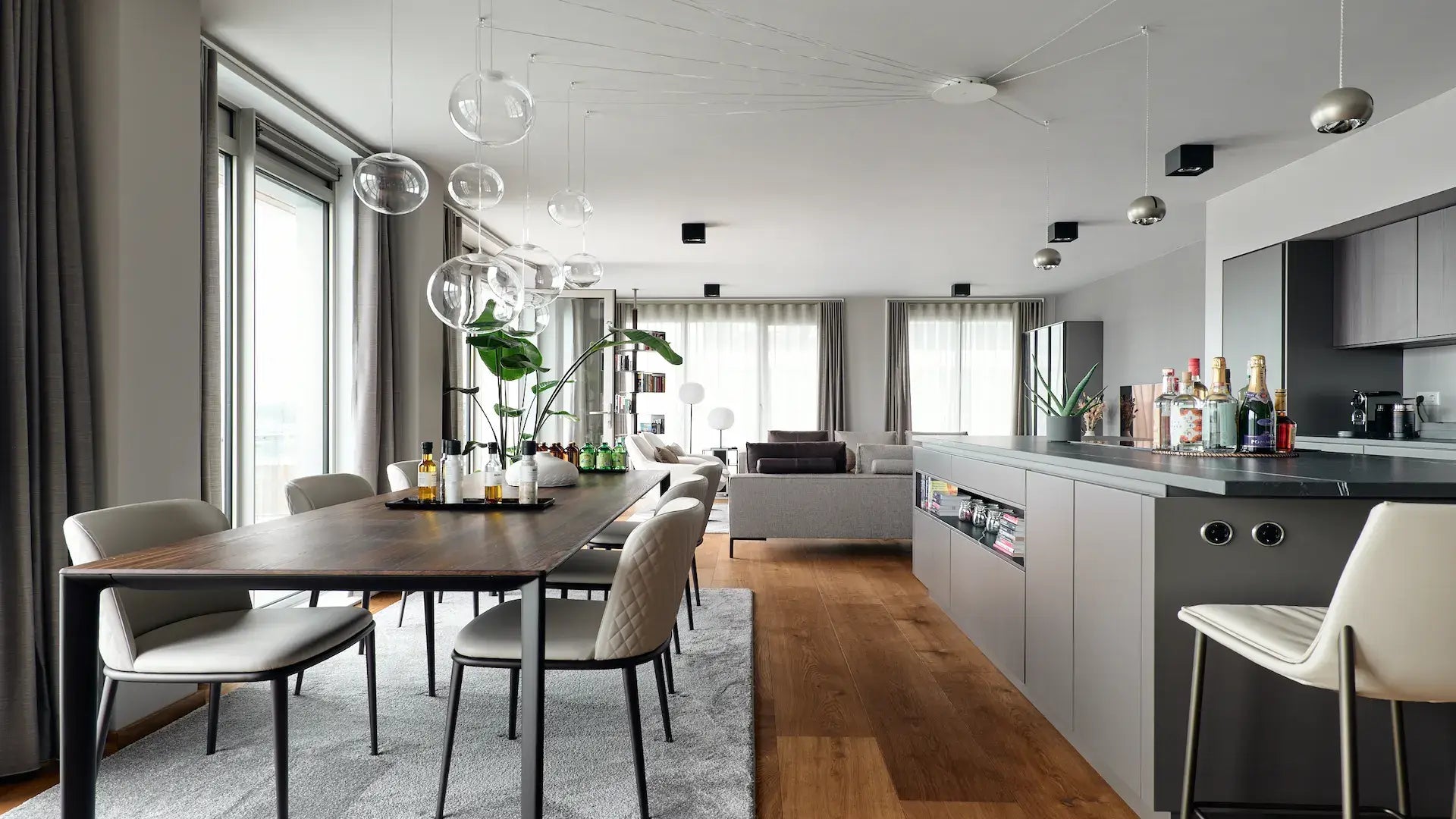
Is a wooden floor easy to maintain?
A wooden floor is easy to maintain! Maintenance of wooden floors consists of periodic vacuuming and mopping of the floor. Previously, a wooden floor often had to be sanded, but this is still the case with a Lak or Hardwachs treatment. With an oiled wooden floor from Uipkes, sanding is no longer necessary. Depending on use, the wooden floor will need to be treated with oil again after 3-5 years. The floor does not need to be sanded.
Curious about the possibilities?
Come by for a consultation in one of our showrooms and receive tailor-made advice for your apartment. Or request our inspiration magazine.
Showrooms
-
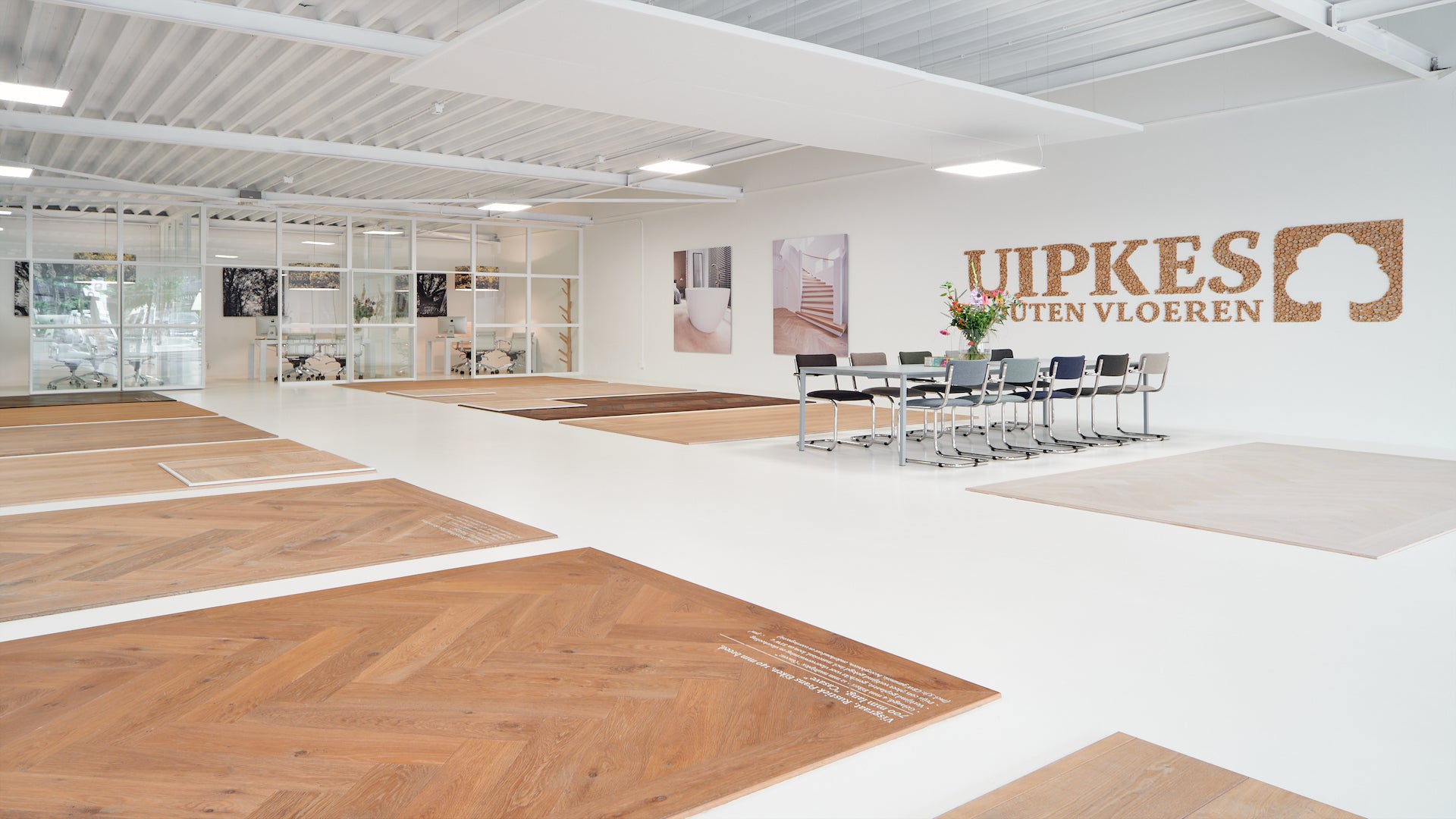
Alphen a/d Rijn
Euromarkt 113
-
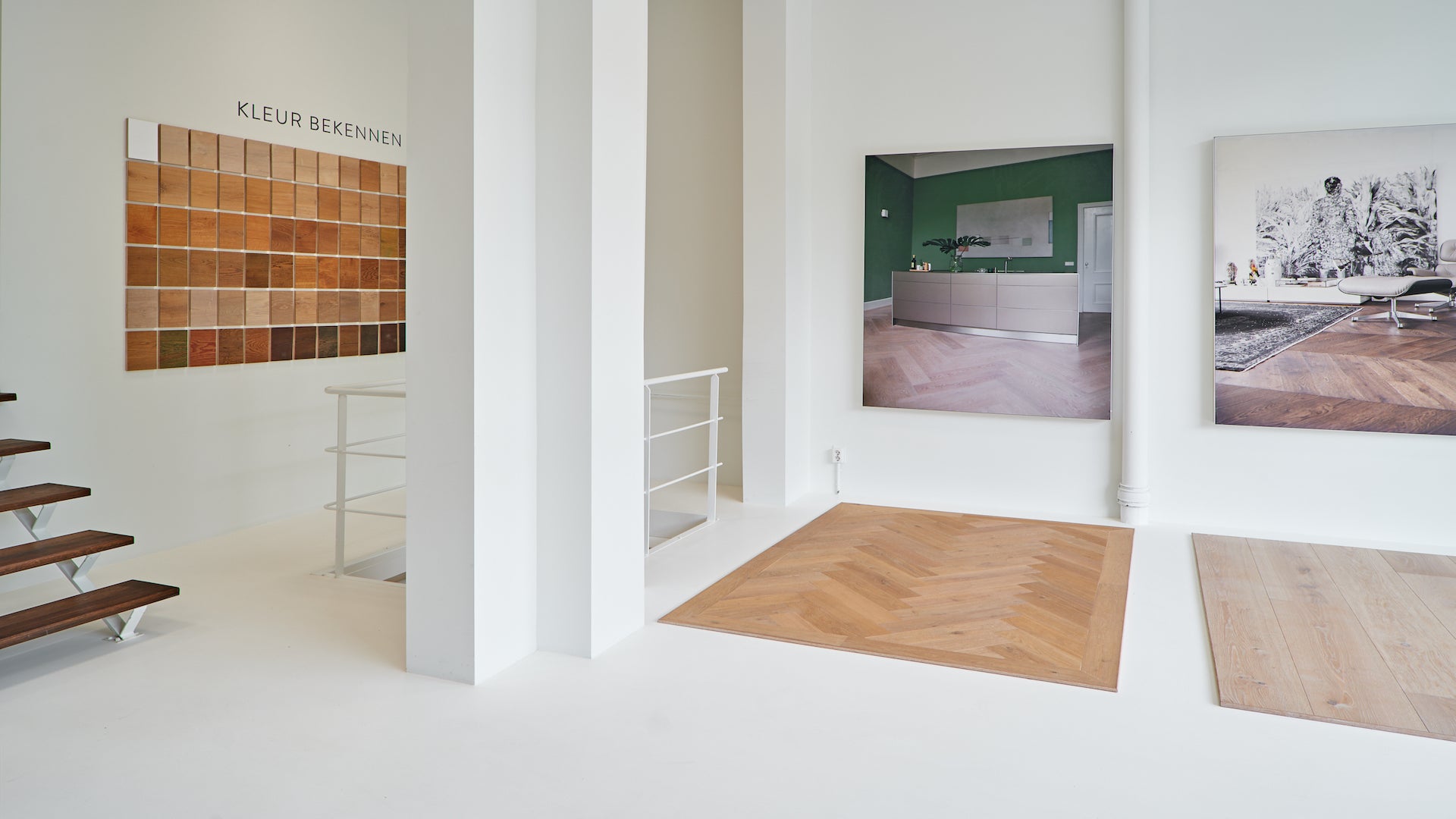
Amsterdam
Roelof Hartstraat 4
Frequently Asked Questions
Are wooden floors suitable for use in apartments?
Yes, wooden floors are very suitable for use in apartments. They can improve the aesthetics of the room and give it a warm, natural look. Wooden floors can also help with sound deadening and insulation, reducing sound transmission to underlying and adjacent apartments.
Are wooden floors suitable for underfloor heating in apartments?
Yes, wooden floors can be perfectly combined with underfloor heating systems in apartments. It is important to choose the right wood specie that is suitable for underfloor heating and to have the installation carried out by an experienced professional. This allows you to enjoy the benefits of both a wooden floor and underfloor heating in your apartment.
Can I install a wooden floor on a floating screed in my apartment?
In apartments built before 2012, you are required to install a wooden floor with a noise-reducing floor. Ask your specialist for information and certification of the floating subfloor. Since 2012, the building code has been amended and "floating screed floors" are used.
Article 3.12 of the Building Decree 2012: Floating screed floor in apartments to promote comfort and sound insulation
- In apartments, as defined in the Building Decree, it is mandatory to use a floating screed floor in accordance with the regulations of this article. The purpose of this provision is to improve the comfort of residents and reduce noise transmission between different residential units.
- A floating screed floor is a structural floor that is installed on top of the supporting structure and the subfloor of the apartment. This screed floor is insulated from the underlying structure by means of sound-insulating materials, such as damping mats or resilient suspension systems.
- The floating screed floor must comply with the applicable standards and regulations for sound insulation, as determined by the competent authority. The minimum performance requirements for airborne sound insulation and impact sound insulation must be met to ensure an acceptable noise level within the apartments.
- The obligation to install a floating screed floor is intended to reduce sound transmission between adjacent apartments. This promotes the privacy and enjoyment of residents, as noise pollution is kept to a minimum.
- It is the responsibility of the builder, developer or owner to ensure that the floating screed floor is properly designed and installed in accordance with applicable standards and regulations. In addition, any sound insulation measures must be taken in the construction of the load-bearing floors and partition walls to achieve optimal sound insulation.
- Failure to comply with the obligation to install a floating screed floor may lead to enforcement measures by the competent authority, such as imposing fines or requiring adjustments to comply with the applicable sound insulation standards.
Note: The above article is a summary and interpretation of the provisions in Article 3.12 of the Building Decree 2012 regarding floating screed floors in apartments. For the complete and official text of the Building Decree, it is recommended to consult the relevant legislation and regulations.
Note: You may not use a floating floor again on a correctly applied floating screed floor, as this will have the opposite effect. There are many Owners' Associations that declare the old regulations applicable by default and impose on residents the old requirement of applying a so-called. to use a floating floor, while this will no longer apply from 2012.
Are wooden floors maintenance-intensive in apartments?
Wooden floors in apartments generally do not require much maintenance. Regular vacuuming and sweeping to remove dirt and dust is usually sufficient. It is important to wipe up spills immediately to prevent stains. Using felt pads under furniture and avoiding scratches and sharp objects can also help keep the floor in good condition.
Can a wooden floor increase the value of my apartment?
Yes, a wooden floor can increase the value of your apartment. Wooden floors are valued for their natural beauty, durability and timeless appearance. Potential buyers or tenants often find it attractive to move into an apartment with a high-quality wooden floor. Wooden floors last for decades and with regular maintenance, several decades longer. It can have a positive impact on the sales or rental price and increase the overall appeal of your apartment.

